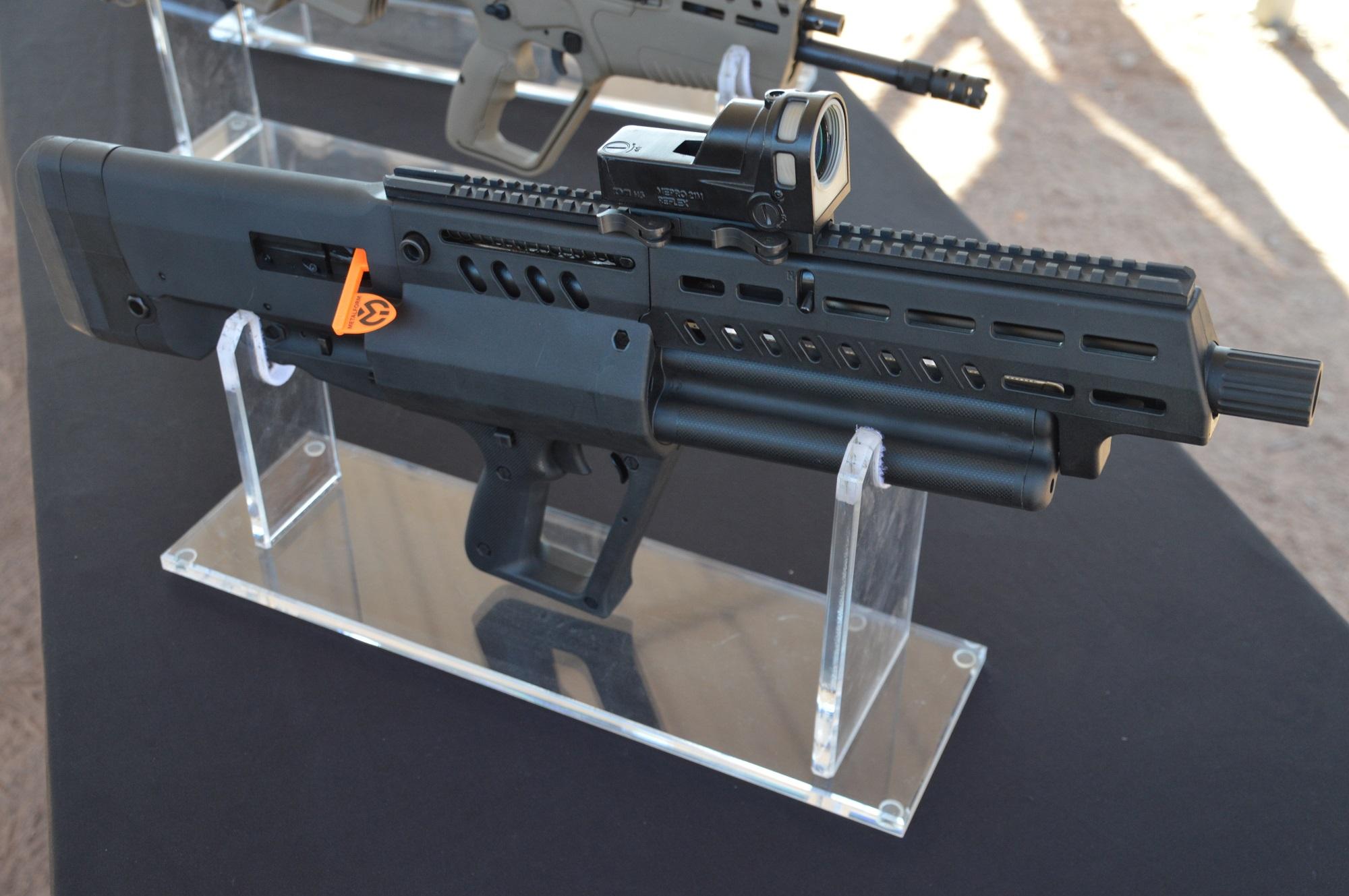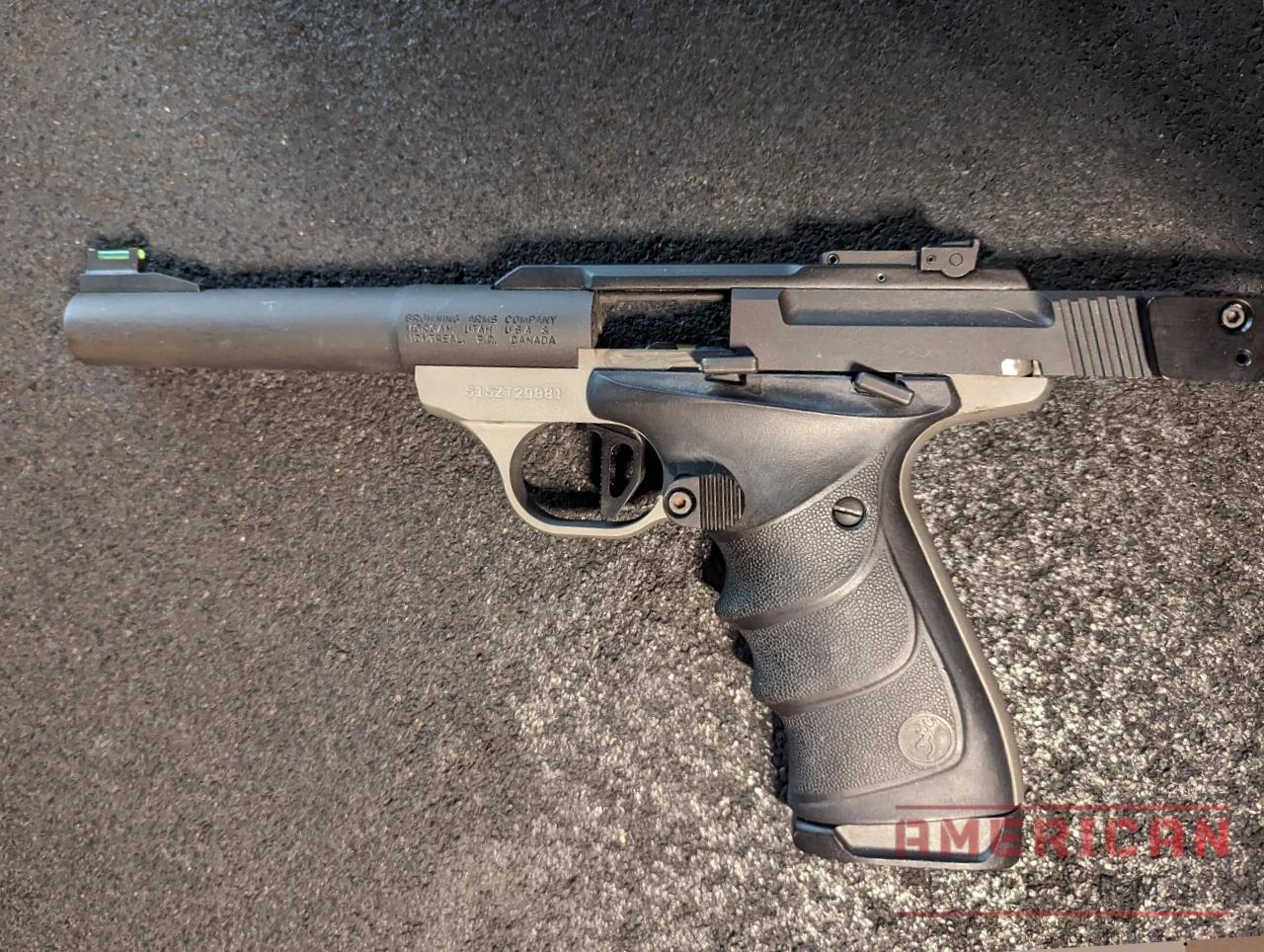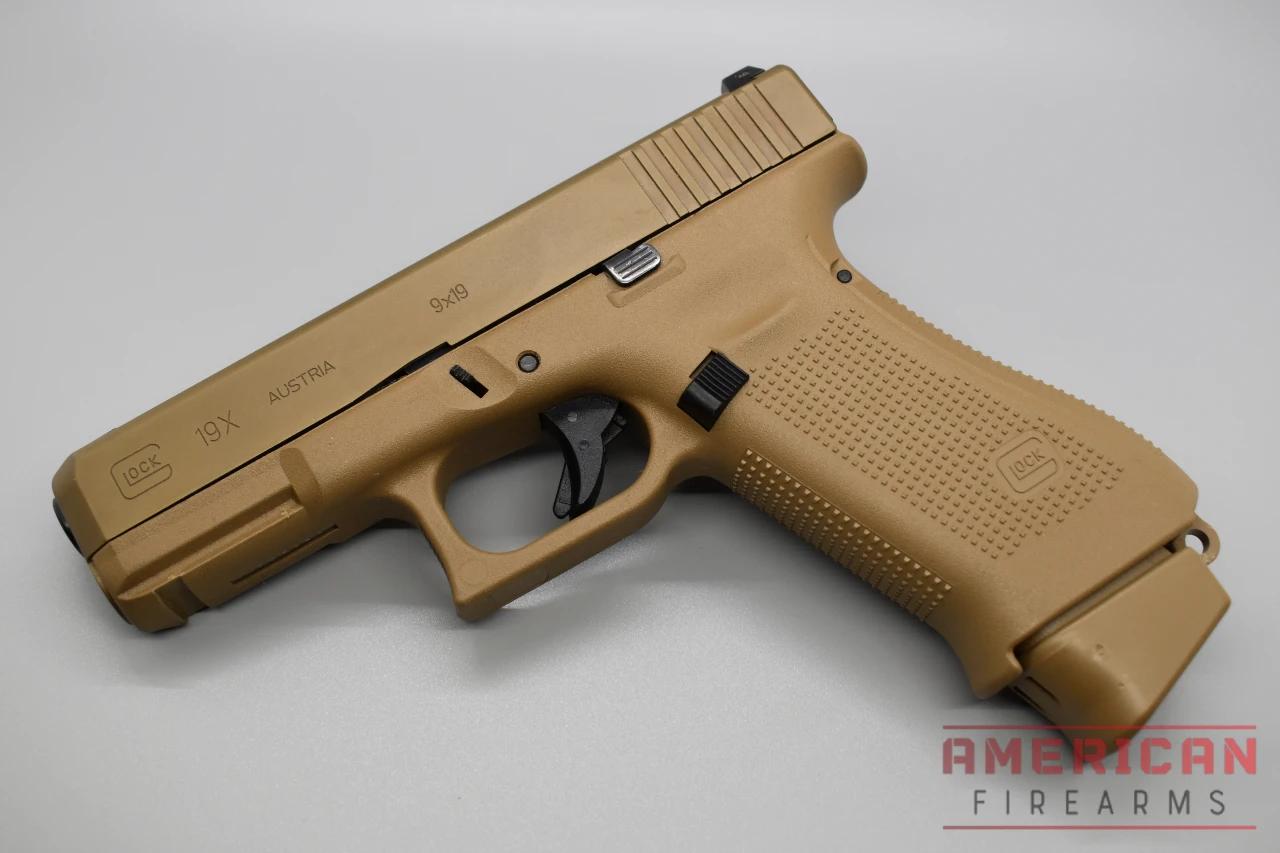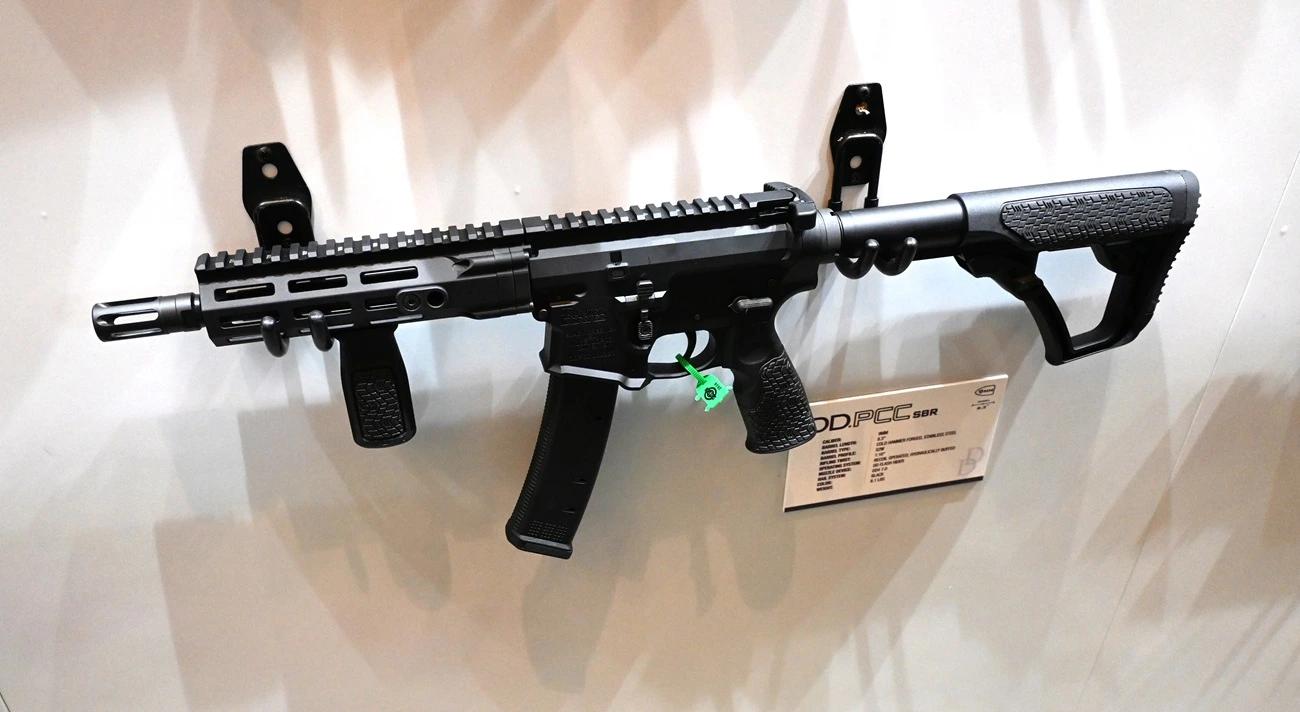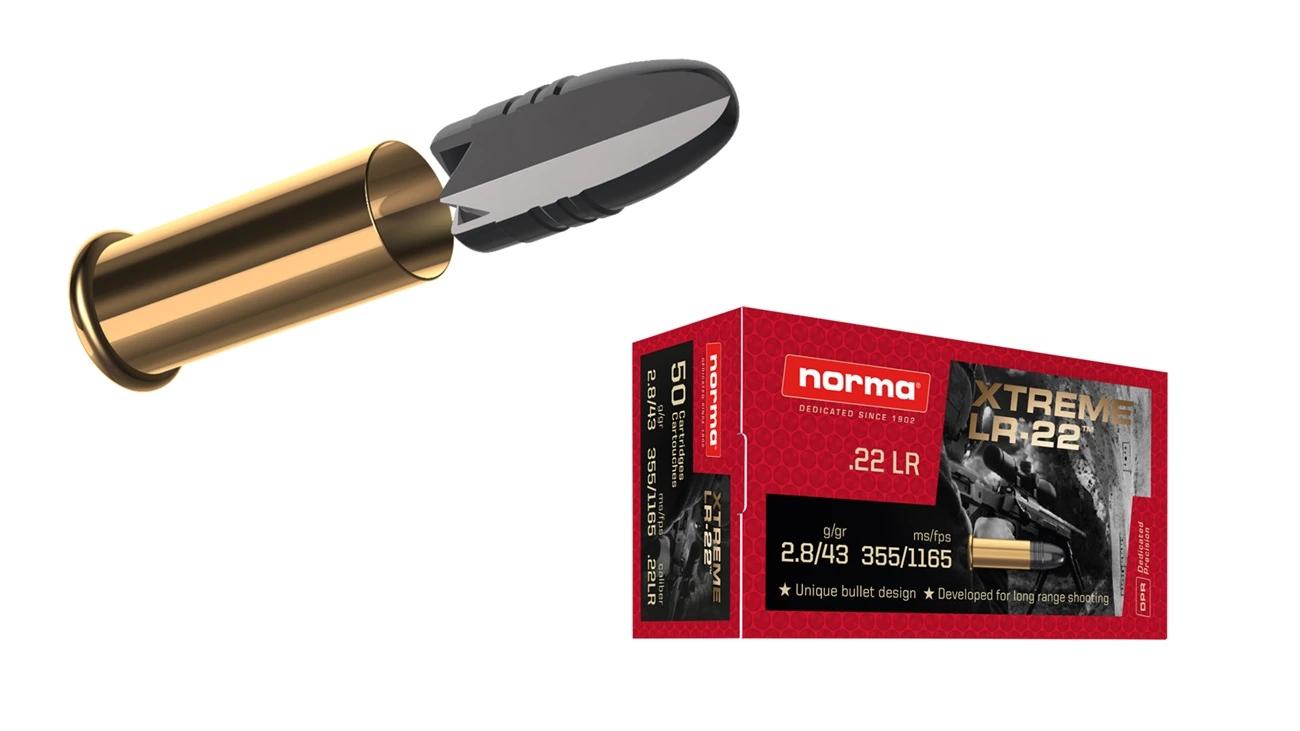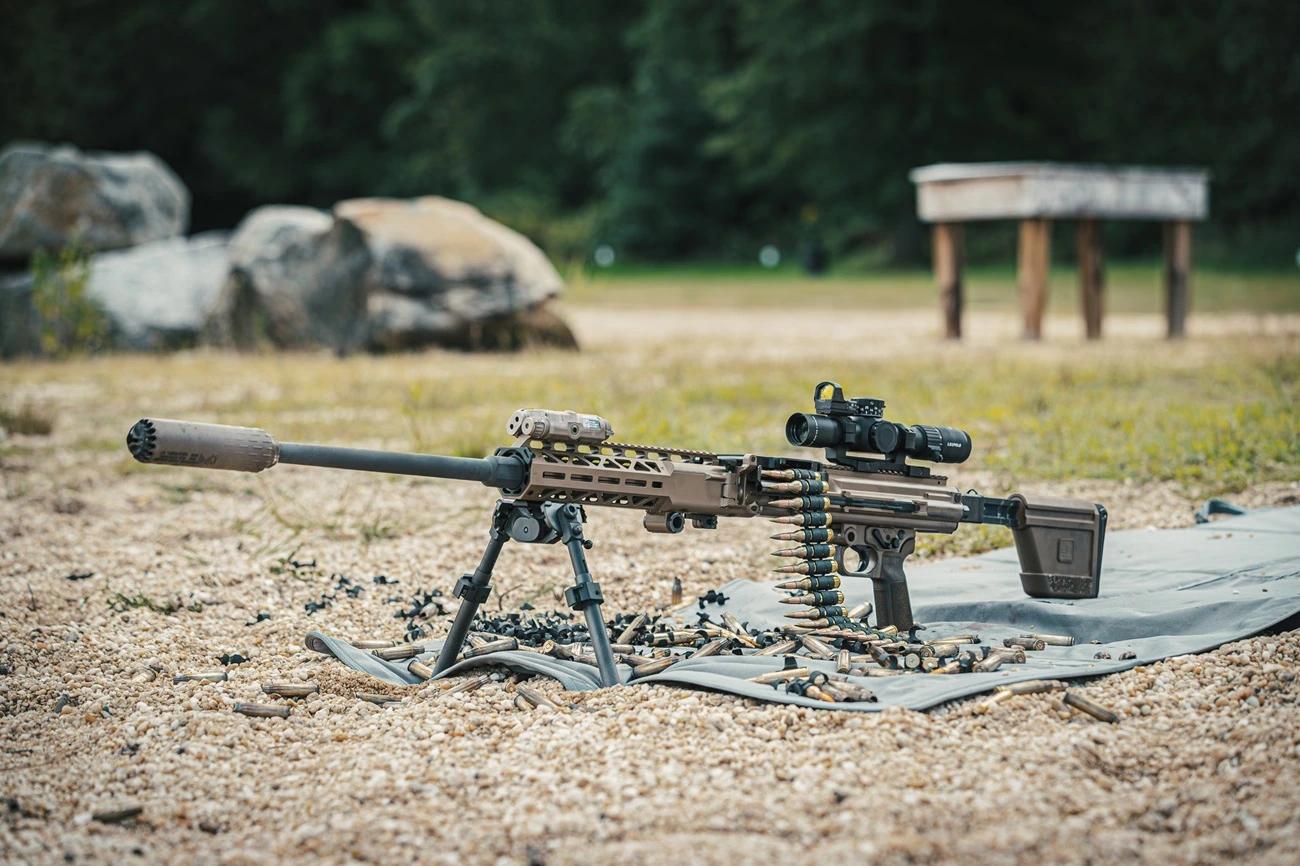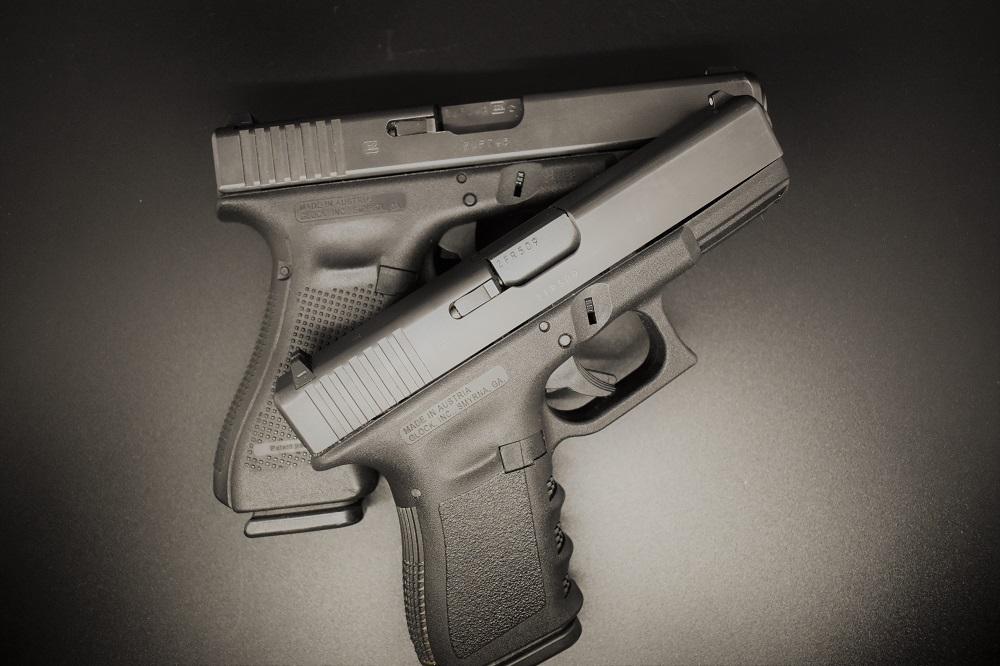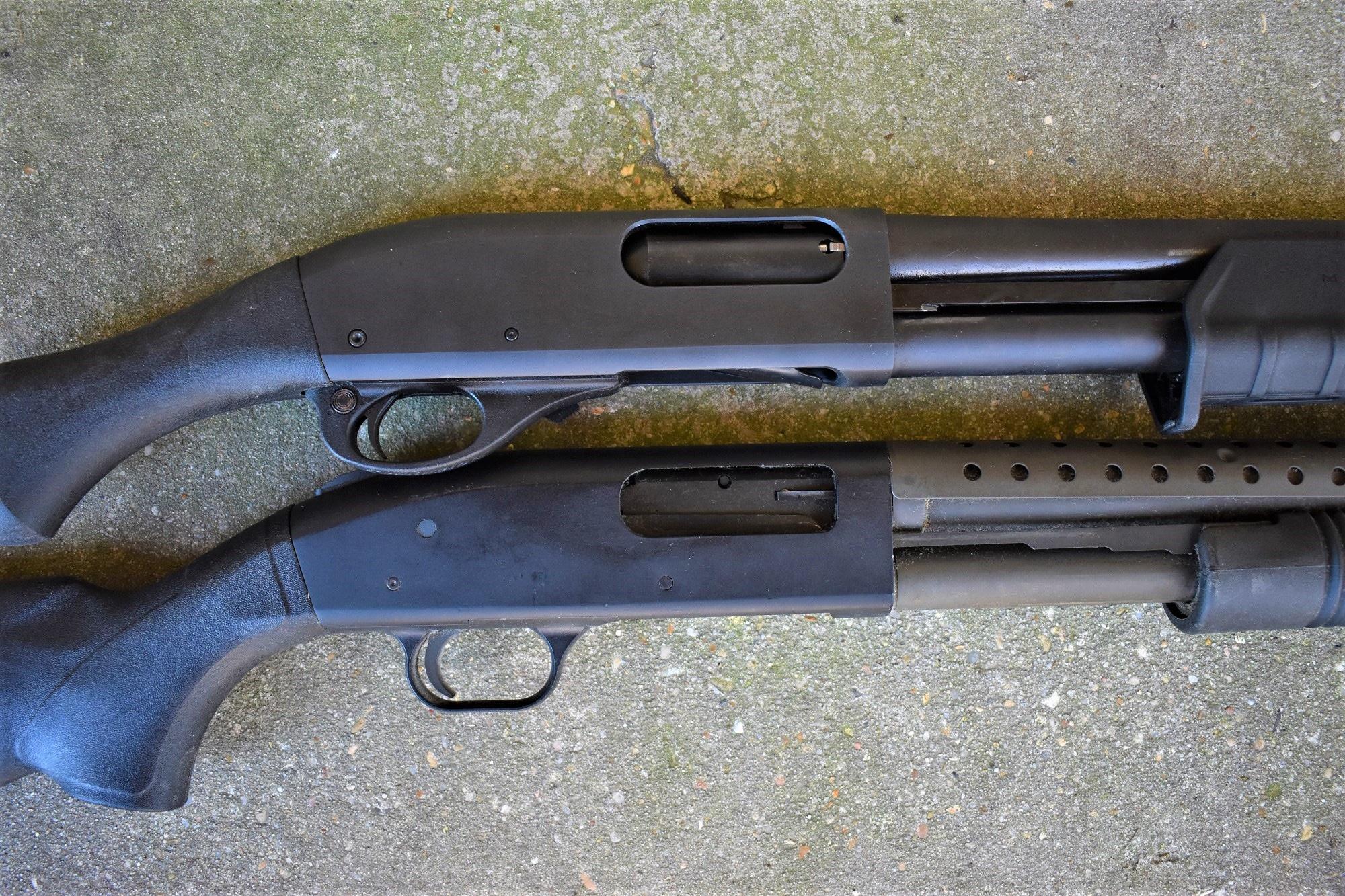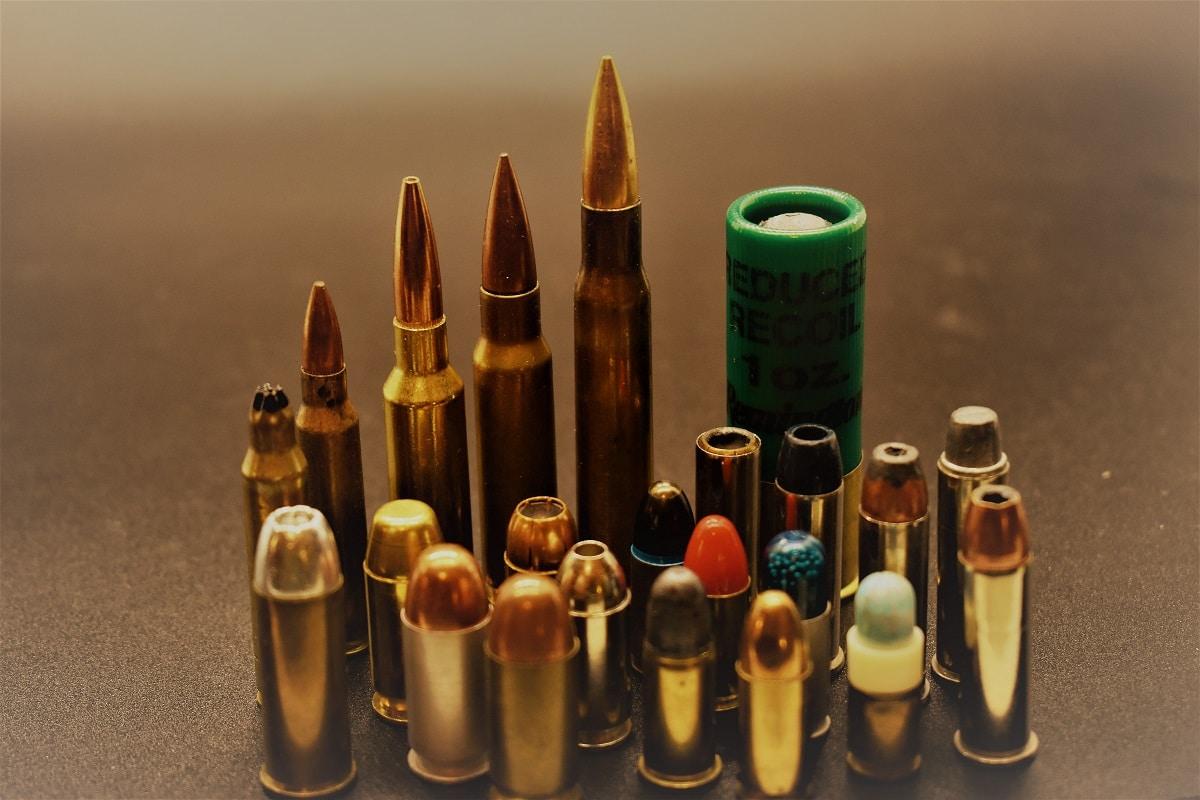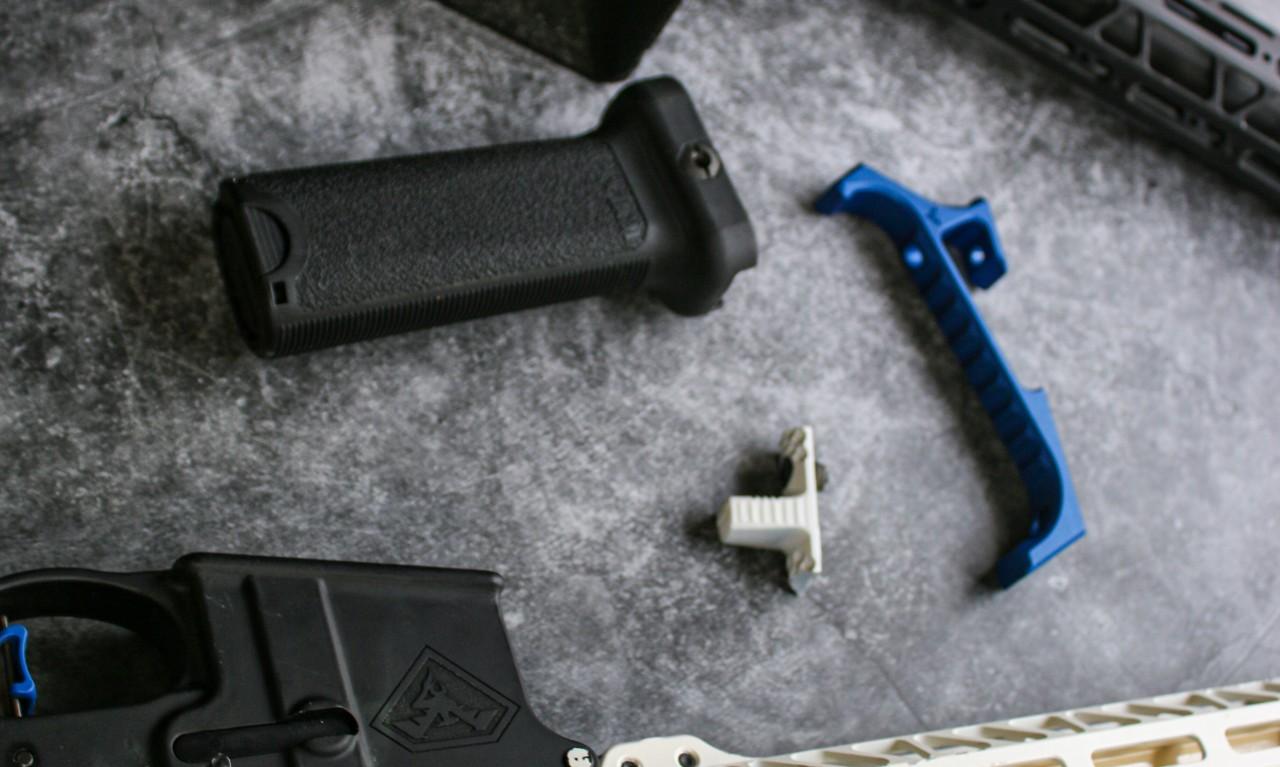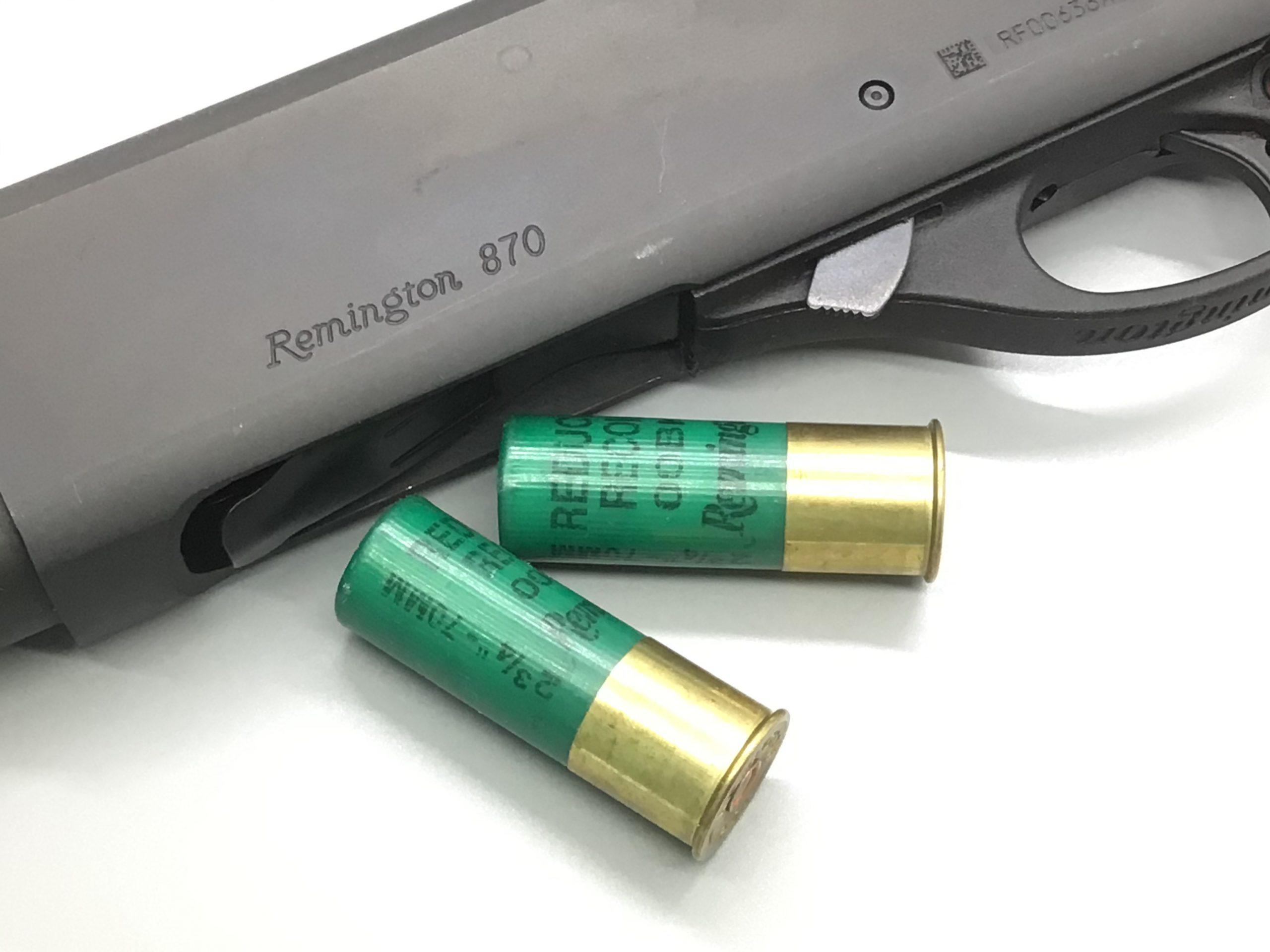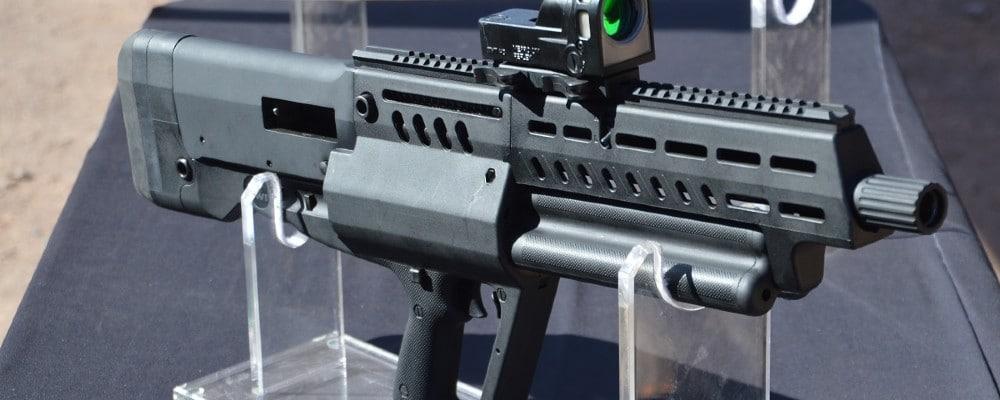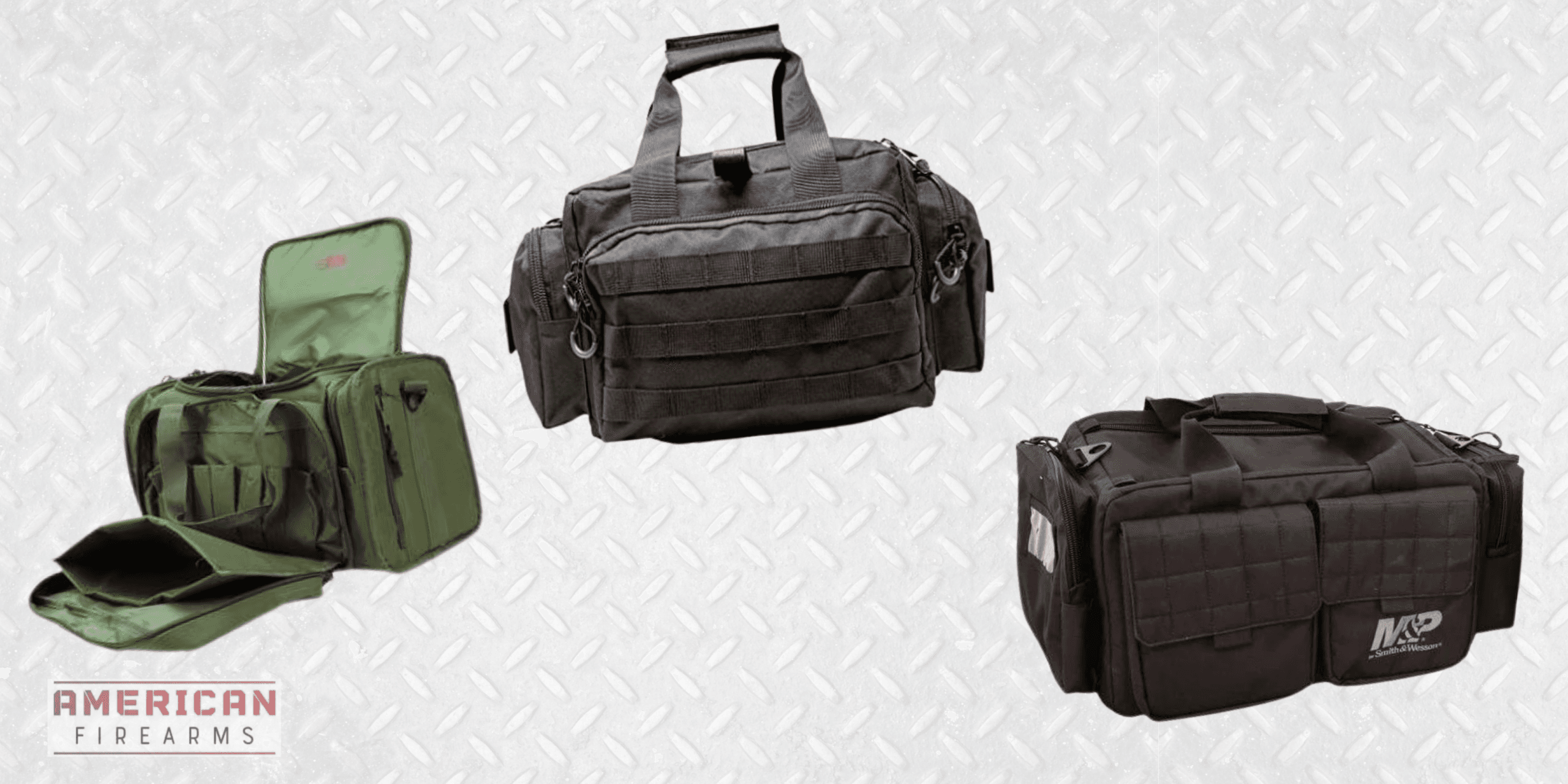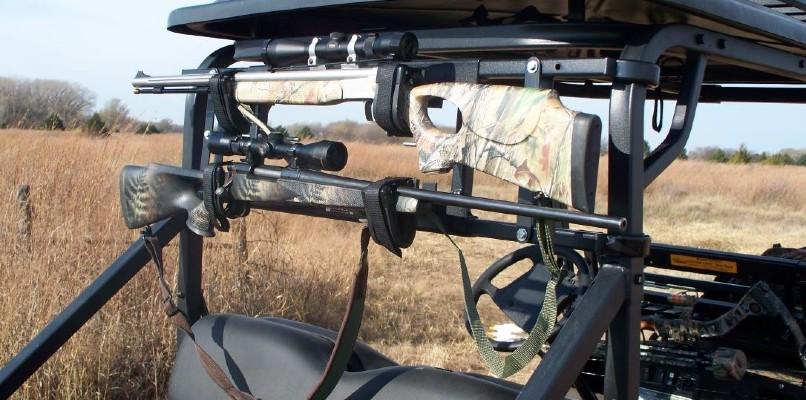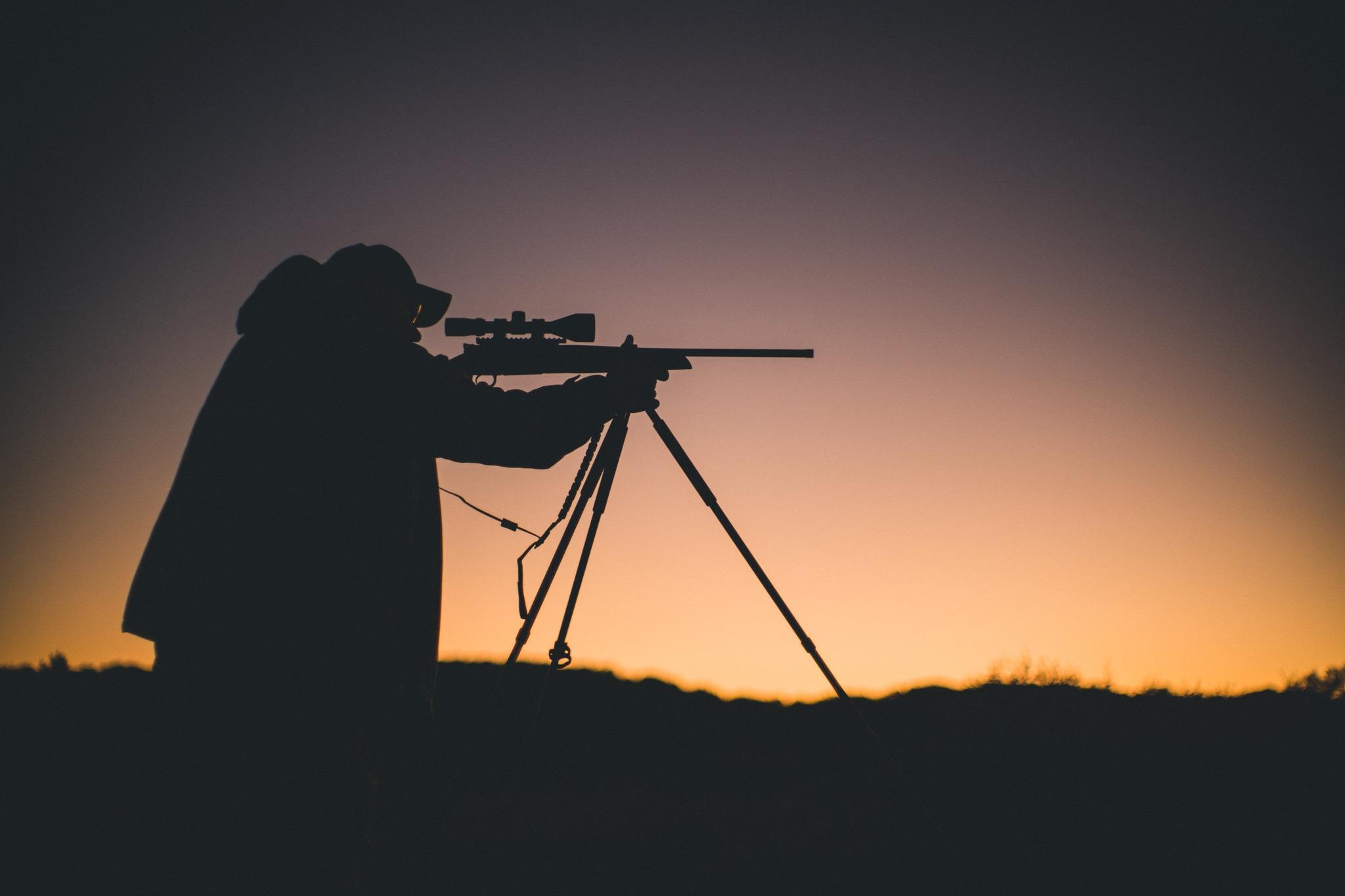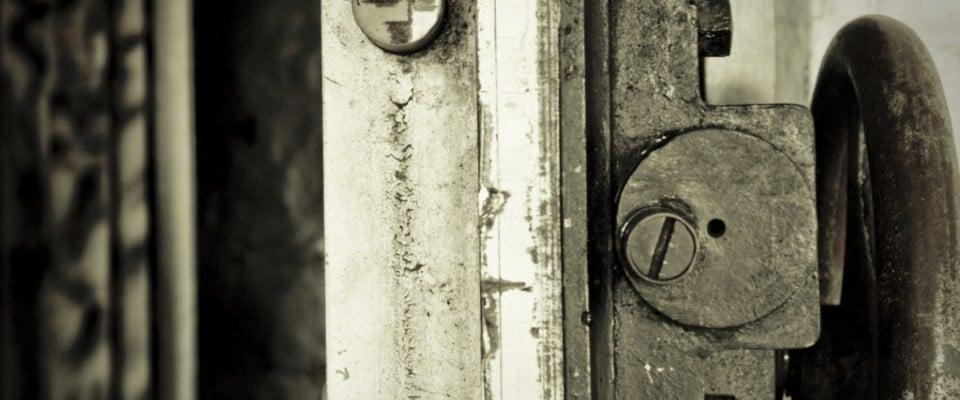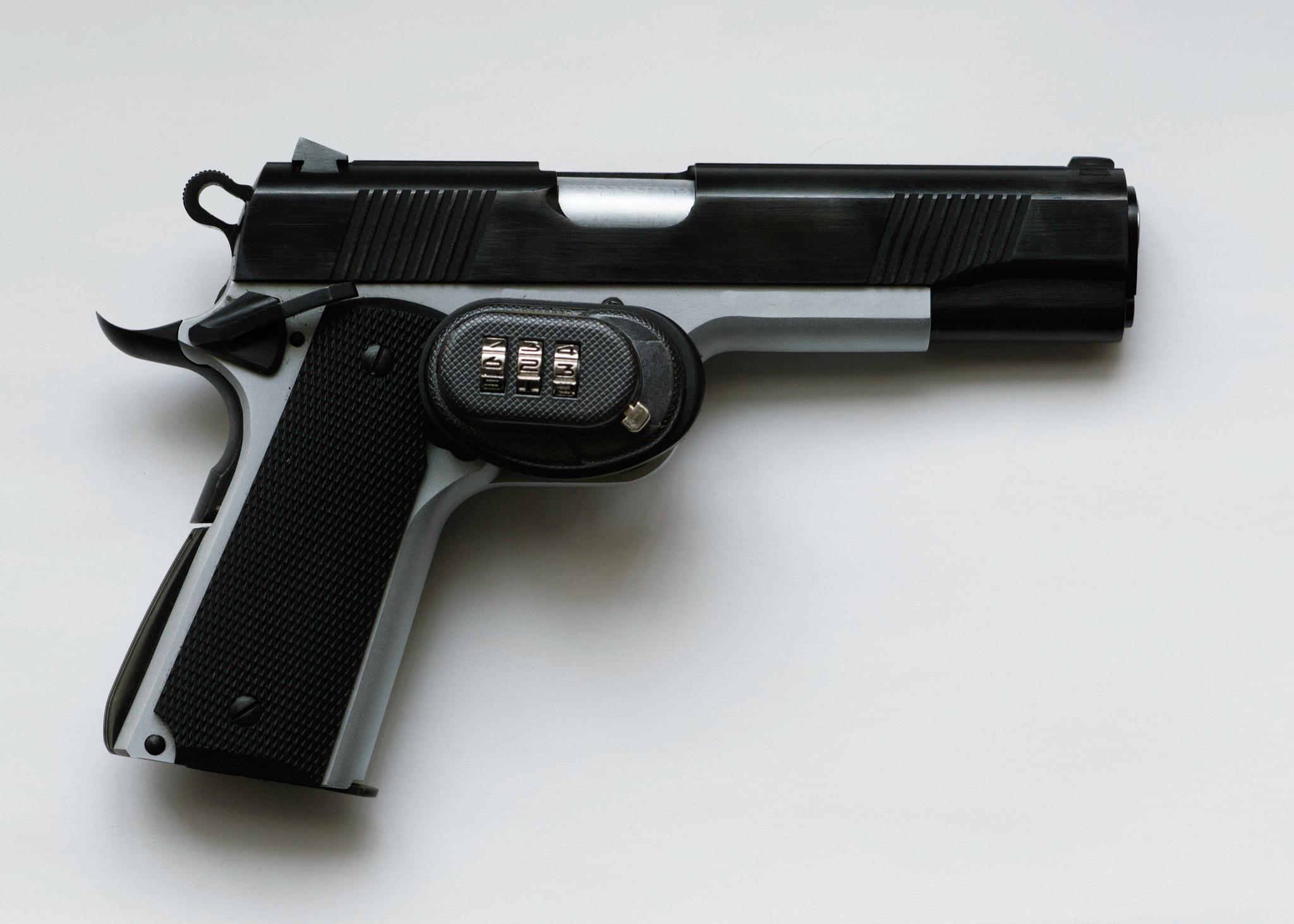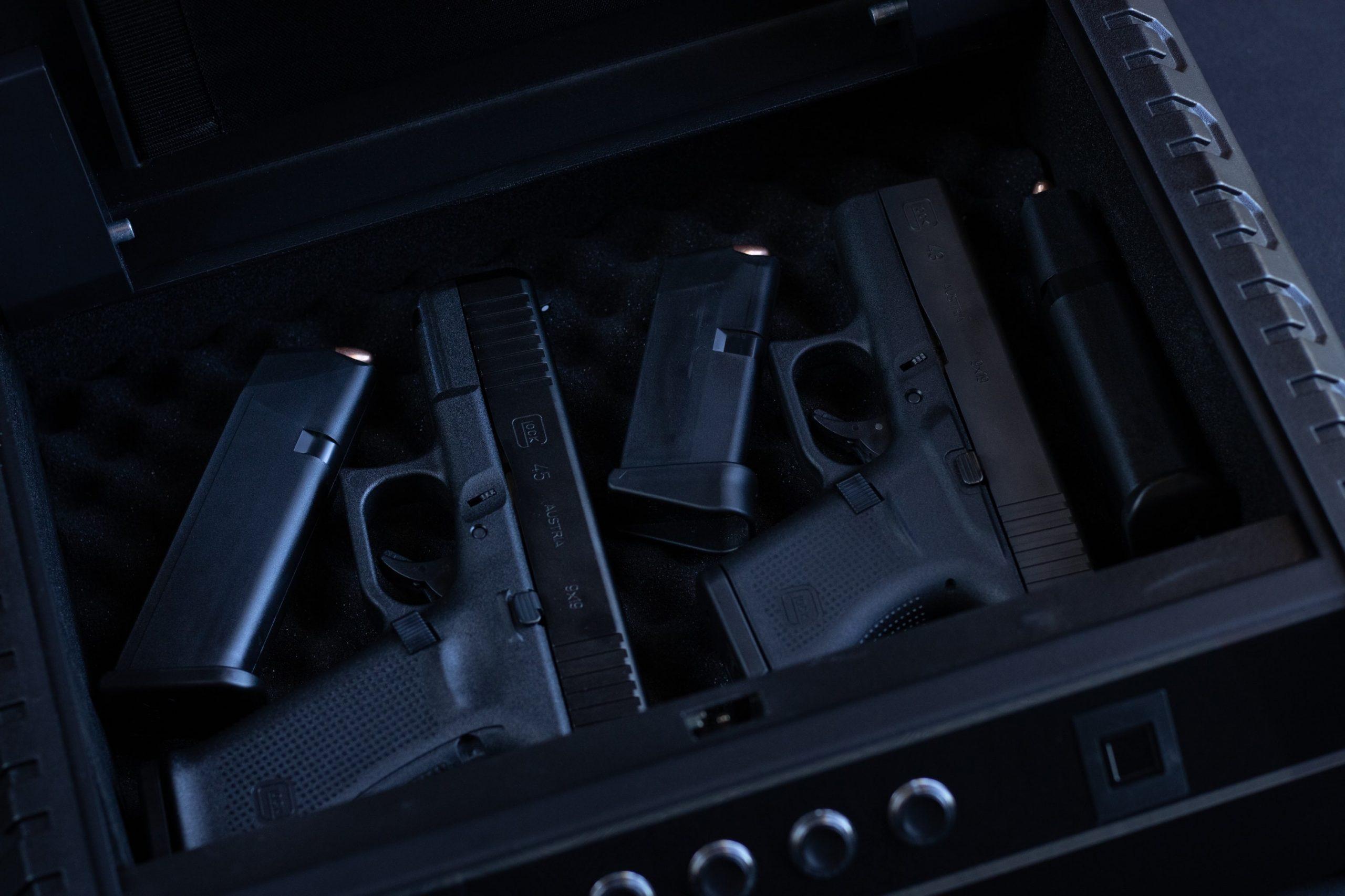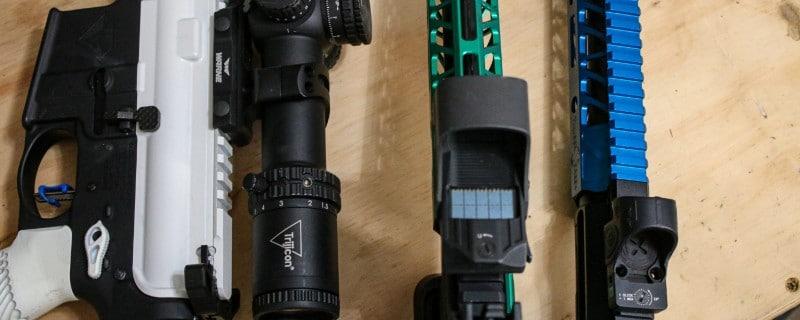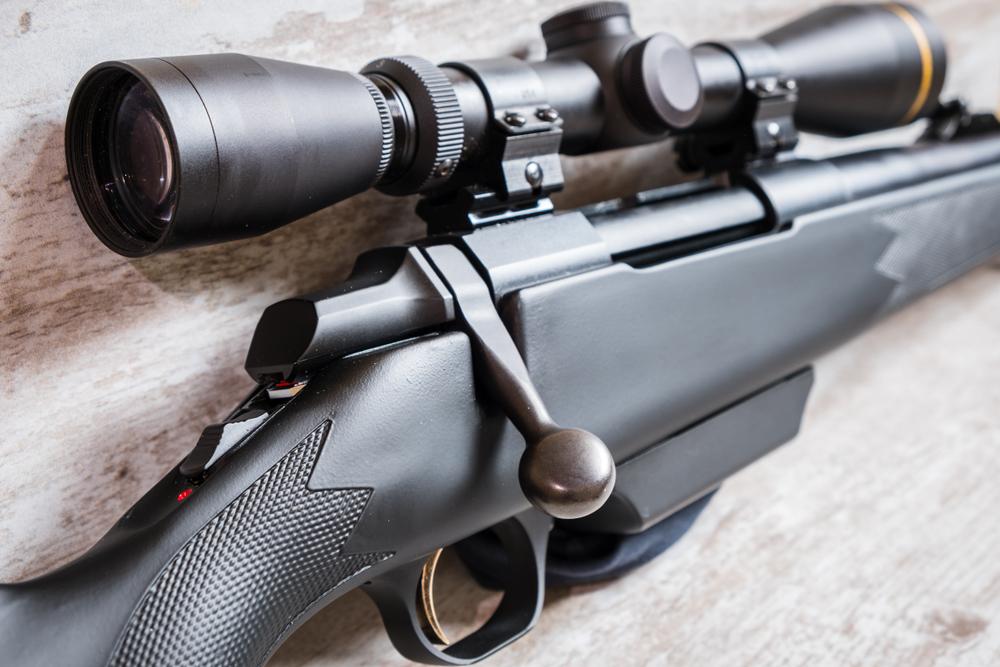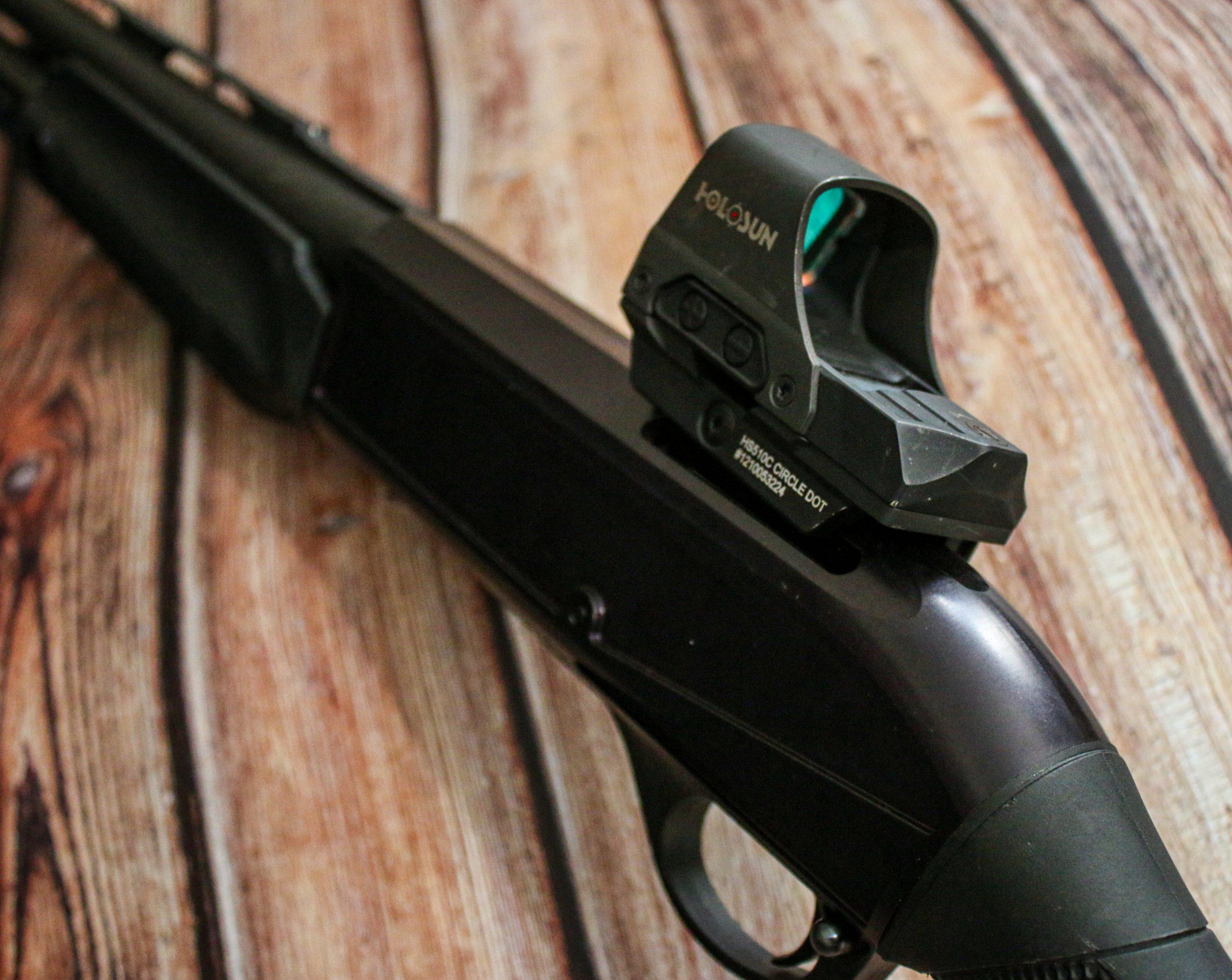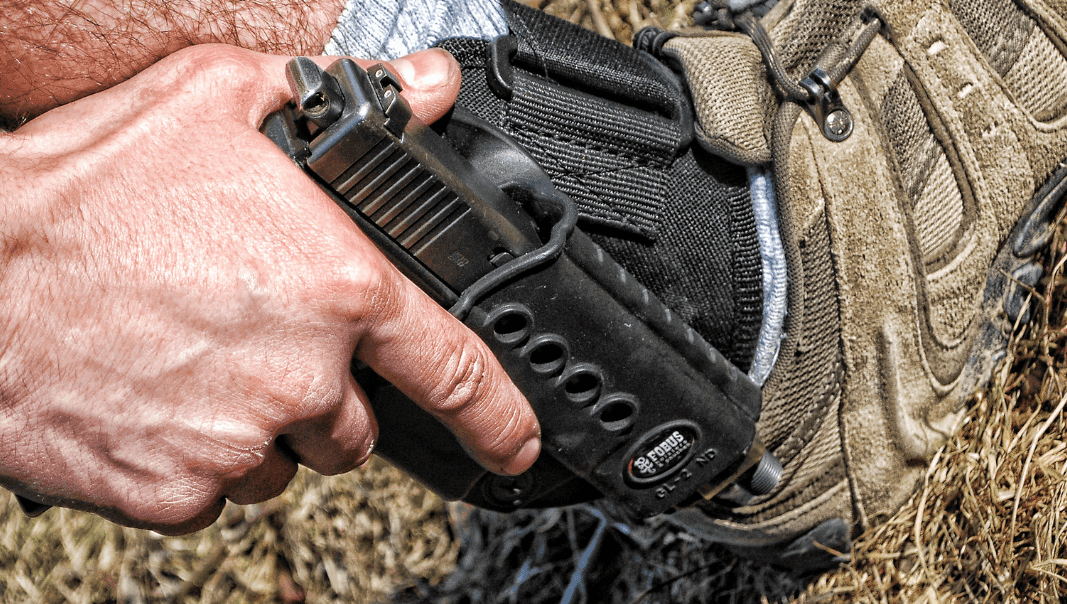Children & Gun Safety
Written By
Michael Crites
Licensed Concealed Carry Holder
Reviewed by
Editorial Team
Learn About The Editorial Team
Share:
Products are selected by our editors. We may earn a commission on purchases from a link. How we select gear.
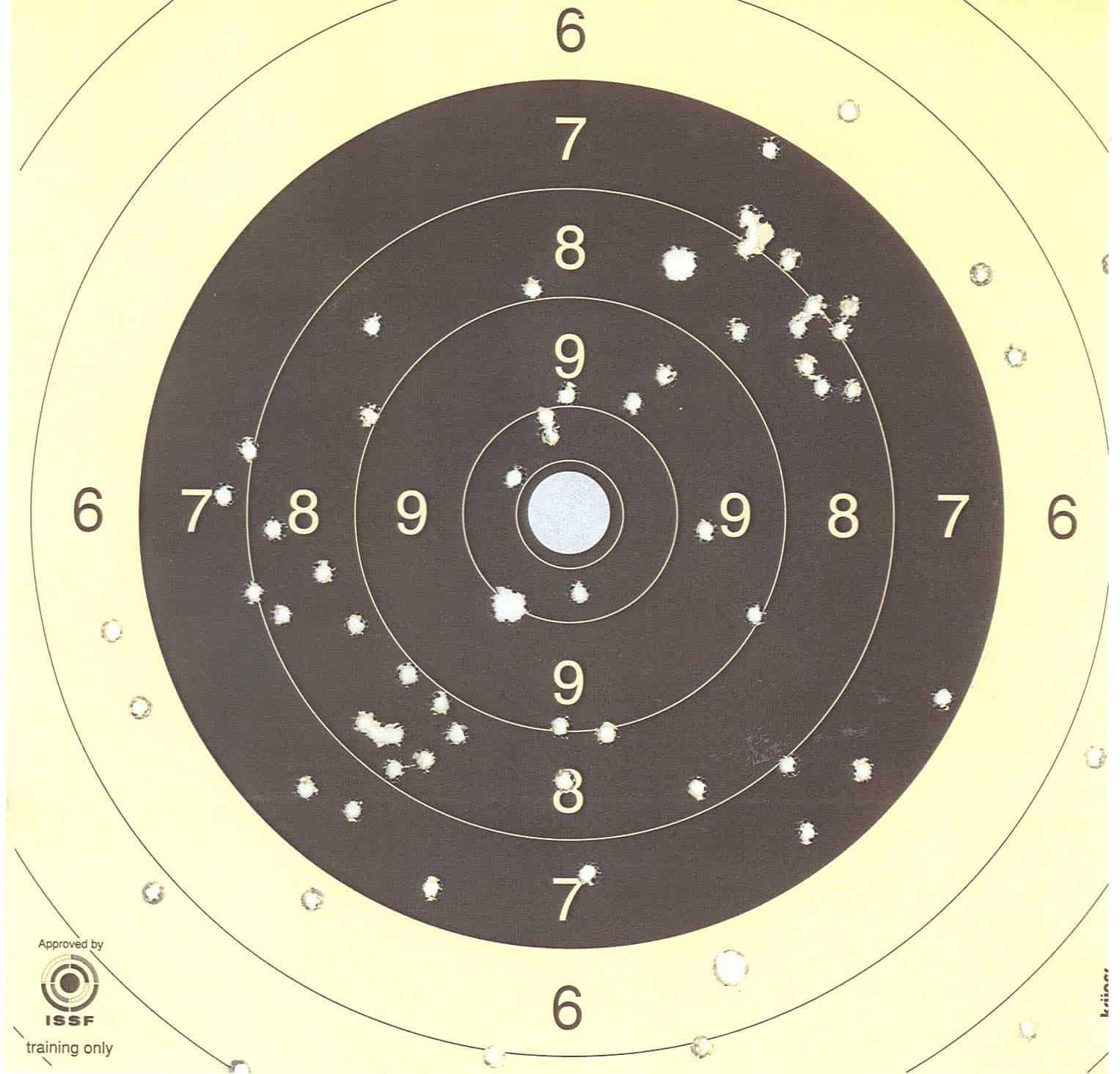
Updated
Jan 2023
Owning a gun is your right, but you have to exercise that right responsibly. A gun is a dangerous weapon that must be used and stored safely.
Teaching kids about gun safety prepares them to be conscientious, responsible citizens and gun owners.
In This Article
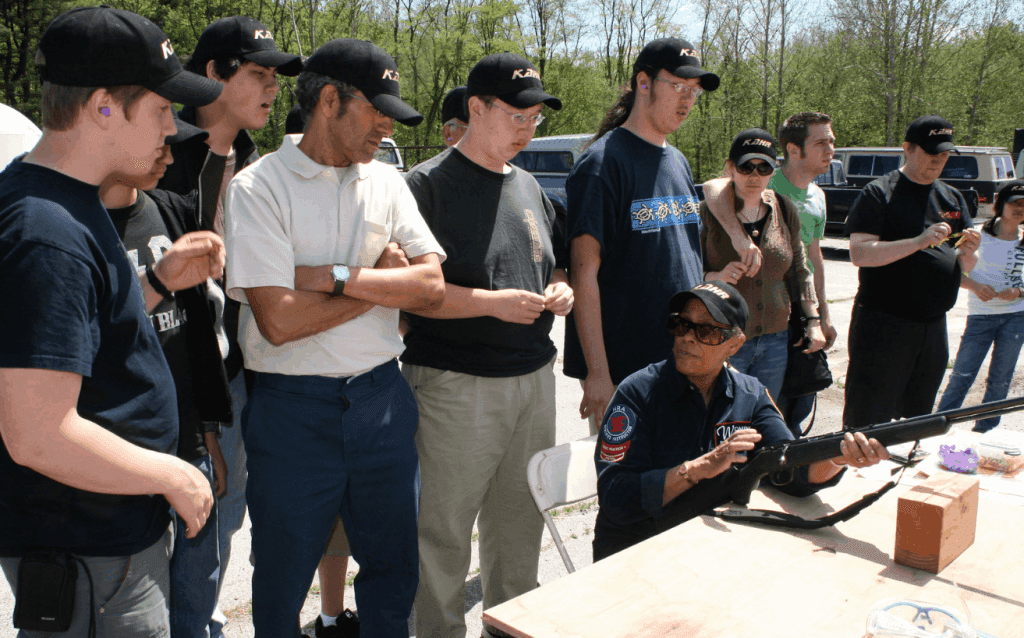
General Rules and Behavior Around a Gun
It’s important to teach your children the basic rules of behavior around guns. If you or your child is around a gun or a person with a gun, you should:
1. Stop what you’re doing.
Upon seeing a gun, your child should instinctively stop what they’re doing and focus on the gun and who’s holding it. Your kid’s life is the most important thing, and anything else is a far second. Your child should remain alert and aware until it’s possible to determine how dangerous the situation is and remove himself or herself from it, if necessary.
2. Don’t touch the gun.
Kids are naturally curious. Whenever they see something cool or interesting, their first move is to touch it. Emphasize to your kids that they should never, ever touch a gun even if it looks like a toy.
Children tend to be clumsy, and the risk of a deadly accident happening is highest when guns are within the reach of children. Kids shouldn’t go near a gun unless they’re absolutely sure it’s not real.
3. Leave the area immediately.
Kids should leave the area as soon as possible when they see someone with a gun. If the person’s intentions are not clear, it is a dangerous situation that children must remove themselves from immediately. Even if a gun is left unattended, your child should go somewhere far away.
4. Tell an adult if you see a gun.
Train your children to let you know if they see a gun at a friend’s or neighbor’s house. Not every parent is as conscientious about gun safety as is mandatory. Adults have the knowledge and experience to respond to situations involving firearms. Kids shouldn’t take the initiative to investigate or challenge a potential shooter on their own.
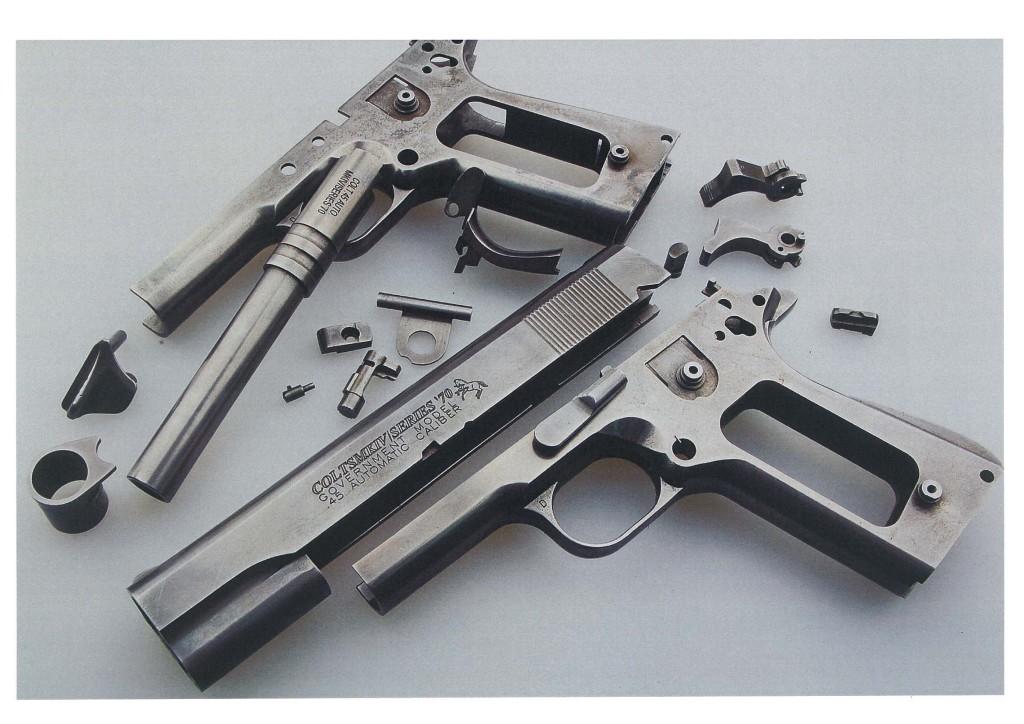
General Rules and Facts About Guns
Childhood is when kids form impressions about guns. Make sure that you’re the source of your child’s gun knowledge so they’re not misled by someone else.
Guns are not toys.
The media tends to trivialize guns. Misusing guns can have serious, permanent consequences. Your kids should know and understand that guns aren’t toys, even if they’re small — such as an AR pistol — they are never to be seen as something to play with.
Guns are tools and weapons.
Guns are metal firearms that are used to kill animals or people. They expel bullets through the chamber at a speed fast enough to tear through flesh, muscle, and bone. The guns shown on movies or TV shows are just props, not the real thing.
Guns are dangerous.
Adults have to practice firing guns often. Aiming and firing is a difficult exercise that requires precision. When people carry guns, it’s either to protect themselves or to harm someone else. Guns are dangerous because the smallest misstep could kill someone.
Guns on TV or video games are not real.
Characters who get shot on video games get extra lives or a do-over. On TV, gunshot victims often have plenty of time to receive treatment at a hospital. In real life, there are no do-overs.
Guns can kill or injure people.
People who are injured by guns experience physical and mental trauma. Even if a gunshot victim doesn’t die instantly, massive blood loss can result in the victim’s death.
Guns don’t give you a second chance.
Gunshot wounds can leave the victim paralyzed or in constant pain. Bleeding to death from a gunshot wound is a slow and agonizing death. Children should hear about the reality of the potential consequences of gun misuse from you so that they don’t have to experience them for themselves.
Guns are not inherently bad.
Guns aren’t the reason for violent incidents. Guns don’t have motives or intentions. It doesn’t matter if it’s an AR-15, a bullpup shotgun, or a pocket pistol — guns are bad when ill-intentioned people use them.
Guns are a powerful instrument.
Guns are powerful, but that doesn’t mean they’re bad or evil. They can be powerful forces for good or for entertainment. People with guns have saved lives.
Some people keep guns for safety.
If your child feels confused about why you have a gun at home, explain that some people keep guns to feel safe and secure. Having a gun can protect them from bad people who also have guns — and home defense is an important aspect of keeping a home safe.
Some people use guns for hunting.
Hunting is a fun solo or team activity. In the context of hunting, guns are tools that allow people to practice the hobby they love — with fantastic, historic caliers such as the .308 and fireams such as the Remington 700 having a place in hunting and history.
Always treat guns with respect.
Your children may be future gun owners. Guns should only be taken out when it’s permissible to do so. Holding a gun imbues them with additional power, and they should be conscious of the extra power and only use it in the right way.
Mass shootings are not normal.
Mass shootings are increasingly common, but your children shouldn’t be desensitized to violence. Tell your children that some people shouldn’t have guns, and that mass shootings occur, in part, when the wrong people are entrusted with guns.
Pellet and BB guns are not toys.
A gun doesn’t need to be loaded with live bullets to be deadly. If a BB gun is shot at close range or at a sensitive body part, it could maim or kill someone. Treat pellet and BB guns like real guns, because it’s training.
Rules to Follow if You Have Guns in the Home
Protect your family from the increased safety risk of keeping guns in the home by always keeping the guns in a locked safe when the guns aren’t in use. These rules are especially crucial if you have young children at home.
Store and lock up guns at all times.
If you teach your children everything about guns and how dangerous they can be, your kids will understand why the guns always have to be in a locked storage area.
Protect kids by not allowing access to the gun safe or storage.
Keeping the code or combination to the gun safe a secret from your children protects them from childhood gun accidents, which are very common. Explain that this is a house rule so that they don’t try to find out the combination from a family member.
Emphasize that access to gun safe or storage is for parents only.
Only adults in the home should go near the gun storage area. Tell your children that there will be severe consequences if they go near the gun safe.
Supervision by an adult is required.
You can show a gun to your children to satisfy their curiosity. Make sure that they understand that they’re only seeing the gun because you’re allowing it and you’re there to supervise. They are not allowed to be near guns without your supervision.
Play is not allowed with a gun.
Don’t let your children play with guns as if they’re toys. If you do, it undoes everything you taught them about gun safety.
Storage of guns and ammunition need to be done separately.
Storing guns and ammunition separately promotes the idea that guns should always be unloaded unless they’re in use.
Rules for Using Guns
It’s possible to teach children how to use guns safely. Here are the rules they should follow when they use guns.
Don’t use a gun without adult supervision.
Even once your child knows how to use a gun and feels confident doing so, remind your child that it’s not permitted to use a gun without parental supervision.
Use guns in a controlled environment only.
Children have no reason to use guns in a random place. They should only use a gun when hunting with an adult or in a controlled shooting facility.
Wear eye and ear protection at all times.
Loud gunshots can cause damage to the inner ear or permanent hearing loss. Gun powder irritates the eyes, either through direct contact or when it’s transferred on the hands. Ear and eye gear protect these important body parts from injury.
Assume that a gun is loaded.
Assuming that a gun is loaded helps prevent accidents. If kids assume a gun is loaded, they’ll be more careful with guns.
Point the gun in a safe direction.
Guns should not be pointed at people, animals, or things. If children don’t follow this rule, they could accidentally shoot someone.
Never point a gun at someone.
Pointing a gun at someone means that you want to kill them. If you’re teaching your children proper morals, they should know that killing people is wrong. Thus, they shouldn’t be pointing guns at anyone.
Don’t point the gun if you’re not ready to shoot.
You don’t need to point a gun to practice aiming. Only point a gun if you’re about to shoot something.
Keep guns unloaded unless ready for use.
A loaded gun is an accident waiting to happen. Many children accidentally shoot themselves or others because a gun is left loaded in the house.
Don’t put your finger on the trigger.
Putting your finger on the trigger, even in a joking way, could lead to a dangerous situation.
Check your surroundings before firing.
Make sure that no one else is in the background in case you miss your target. This is very important when hunting. Hard surfaces or water could make the bullet ricochet and hit someone.
Check that the barrel is clear.
The barrel needs to be clear before you fire the gun. If the barrel isn’t clear, it could be dangerous.
Handle the gun with extra care if it doesn’t fire after pulling the trigger.
A malfunctioning gun is extremely dangerous. If your gun doesn’t fire after you’ve pulled the trigger, something’s wrong with it, and it should no longer be used.
Use the right ammunition.
Store your ammunition properly to prevent its corrosion. The right ammunition makes guns more likely to function correctly.
Talking to Your Children About Guns
Gun-related accidents are the second-highest cause of death for children under the age of 18.
Even if your guns are in a safe place, or no one you know owns guns, talking to your children constantly about gun safety is the only way to make sure they know what to do when they see a gun and how to handle a gun safely if they have to.
If you don’t own a gun, it’s highly possible someone else does. 33% of Americans own guns.
Parents with very young children should talk to the parents of their children’s friends to find out if they have guns in their homes, and which rules, if any, they have about gun safety.
Elementary school children learn through repetition. Explain everything first, using pictures and examples. Then, quiz your child about the important points to ensure they’ve retained the information.
Middle schoolers are more aware of the world around them. When a gun incident like a mass shooting hits the news, use the event as a conversation catalyst for emphasizing the importance of not touching guns and not giving in to peer pressure if a friend has a gun.
By the time your child is a teen, friends might actually be carrying guns for hunting or for more nefarious purposes. Talk about what to do if someone brings a gun to school or to a party.
At all ages, children should feel comfortable going to you or another adult if a peer with a gun makes them uncomfortable or isn’t practicing gun safety.
While You Are Safely Shooting: Remember the Four Rules
Rule #1: Treat every gun as if it is loaded.
Follow this rule even with pellet guns and nerf guns. You could hurt someone by accidentally firing a gun because you didn’t know it was loaded. That’s why you should act as if all guns are loaded.
Rule #2: Never point a gun at anything you do not want to shoot.
If a gun accidentally goes off, it could kill someone. That’s why you should only point a weapon at something you intend to shoot.
Rule #3: Always know your target and what is beyond it.
Don’t assume you’ll hit your target. If you miss, you want to be 100% sure you won’t hit someone or something else.
Rule #4: Always keep your finger off the trigger until you are ready to shoot.
Children have accidentally shot themselves because their finger was on the trigger. The trigger shouldn’t be touched until the gun is aimed at its target and you’re ready to shoot.
Additional Resources
Sign up for our newsletter
Get discounts from top brands and our latest reviews!

